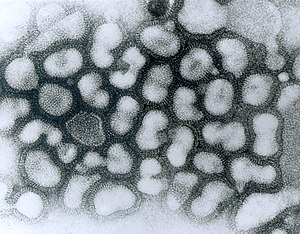
It seems evident from news sites and the Centers for Disease Control and Prevention (CDC) that there has been a significant increase in flu activity across the United States. You can track the progress of national flu activity using the free CDC iPad Influenza Application Tool for Clinicians and Health Care Professionals application. The CDC recommends that everyone 6 months and older get a flu vaccine each year. They recommend in particular that high risk individuals get vaccinated, including those with respiratory medical conditions such as asthma, diabetes, and those with lung disease. Also pregnant women and those 65 years old and older. While it is impossible to predict when the flu season will peak, it appears that January and February are typically the worst months in the year.
This begs the question as to whether those with healthy NRF2 activation have better protection against Influenza.
There are 4 Pubmed articles that investigate this topic, three of which will be referenced here.
Nrf2 protects human alveolar epithelial cells against injury induced by influenza A virus
The conclusion from this first study is as follows:"Our results indicate that IAV (influenza A Virus) induces alveolar epithelial injury and that Nrf2 protects these cells from the cytopathic effects of IAV likely by increasing the expression of antioxidant genes. Identifying the pathways involved in protecting cells from injury during influenza infection may be particularly important for developing new therapeutic strategies."
Nrf2 expression modifies influenza A entry and replication in nasal epithelial cells
This study is very interesting. Here are a couple of quotes from the abstract, "Nrf2 knockdown correlated with a significant increase in influenza virus entry and replication. Conversely, supplementation with the potent Nrf2 activators sulforaphane (SFN) and epigallocatechin gallate (EGCG) significantly decreased viral entry and replication."
The study goes on to explain that "Our data indicate that there is an inverse relationship between the levels of Nrf2 expression and the viral entry/replication. We also demonstrate that supplementation with Nrf2-activating antioxidants inhibits viral replication in human NEC, which may prove to be an attractive therapeutic intervention. Taken together, these data indicate potential mechanisms by which Nrf2-dependent gene expression regulates susceptibility to influenza in human epithelial cells."
It appears that there is a strong correlation between high levels of NRF2 and the ability for the body to Neutralize the Influenza A virus.
Role of Nrf2 in host defense against influenza virus in cigarette smoke-exposed mice
COPD patients are in the high risk category when it comes to dealing with flu. So it is interesting to note in this study that mice with high levels of NRF2 activation were able to have a higher survival rate when infected with the Influenza-A virus.
To quote from the study, "The induction of antioxidant genes was observed for the lungs of wild-type mice but not those of Nrf2-deficient mice after cigarette smoke exposure. Cigarette smoke-
exposed Nrf2-deficient mice showed higher rates of mortality than did wild-type mice after influenza virus infection, with enhanced peribronchial inflammation, lung permeability damage, and mucus hypersecretion. Lung oxidant levels and NF-κB-mediated inflammatory gene expression in the lungs were also enhanced in Nrf2-deficient mice. Our data indicate that the antioxidant pathway controlled by Nrf2 is pivotal for protection against the development of influenza virus-induced pulmonary inflammation and injury under oxidative conditions."
This study in conjunction with those listed above shows initial promise in dealing with the flu season.
Information in this article is for educational purposes only. We encourage you to discuss with a medical professional and conduct your own research on this topic.
Please validate any information here with a healthcare professional. The content is provided for education purposes, This content has not been evaluated by the Food and Drug Administration. Any advice or products mentioned is/are not intended to diagnose, treat, cure, or prevent any disease,











